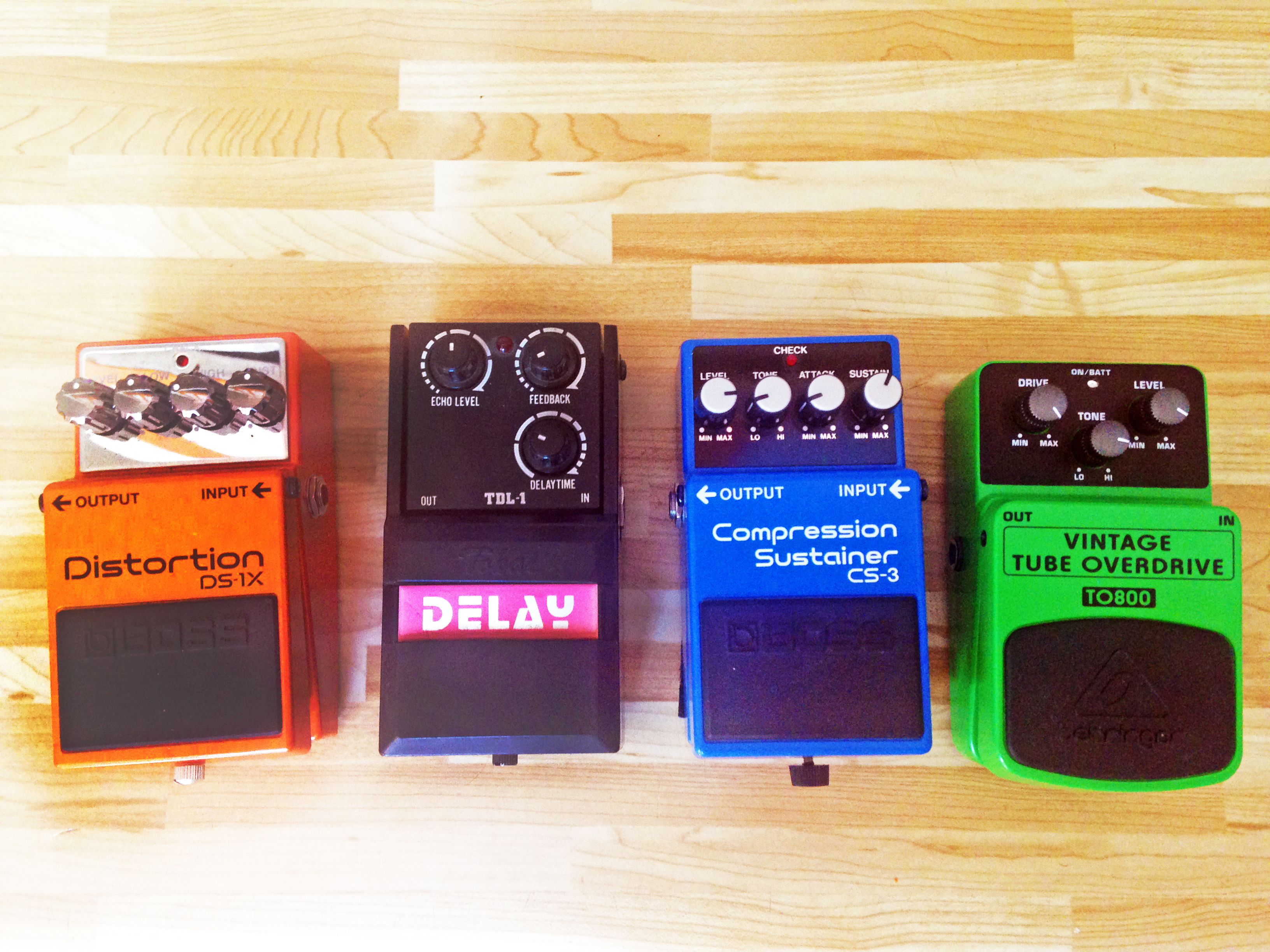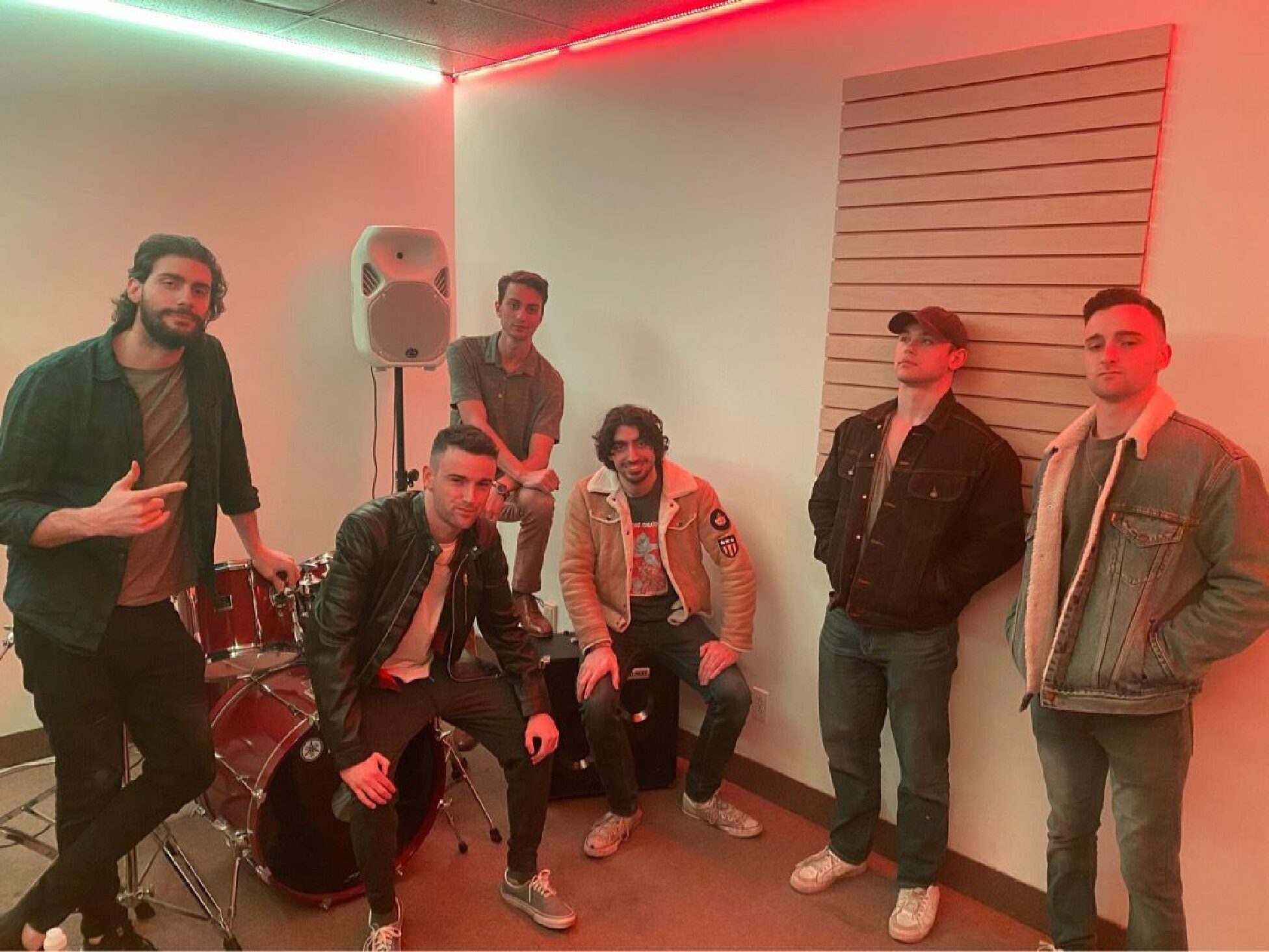A brief guide to stompboxes you can use to pimp out your pedalboard
Coloured like candy and shaped like jewelry boxes, pedals aren’t only adorable; these little powerhouses make a world of difference when it comes to sound.
Some pedal boards, pretty like assorted flowers, are so elaborate that they can take years to create. Finding the right sound is often all about finding the right pedals. They can open the doors to new genres that a clean sound could never reach. Here’s a list of four pedals you need, or your money back.
Compressor:
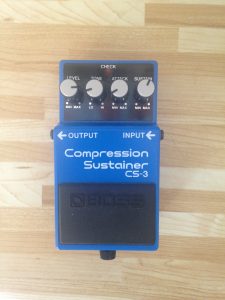
Compresssssssssssssssssor pedals promote an even tone while playing, and they’ll sustain a note so you can add 47 seconds to your EP—just feeling that note, man. In other words, the quiet sounds get louder and the louder sounds get quieter. It allows you to adjust the attack, which means you can soften the onset of a note.
I’ve got a Boss Compression Sustainer CS-3 that works wonders. Now hold on, Kanyes of the pedal world, let me finish. Boss did do a good job with their compressor pedal, so lay off. (It’s blue and super cute).
Distortion:
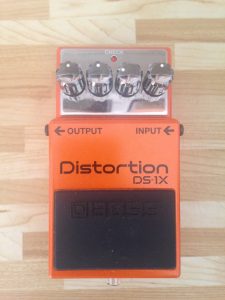
Broken or misused equipment was the catalyst for distortion to break its way onto the scene. Distortion pedals “clip” an instrument’s audio signal, making it sound, well, distorted. To begin, here’s a short ode to the Big Muff pedal. This specific pedal is produced by the Electro-Harmonix company based in New York City. The pedal blurs the lines between being a distortion or fuzz pedal, but it’s been used by so many guitarists that it’s too cool for categories. It’s been heavily used by Jimi Hendrix and on every subsequent Pink Floyd album since Animals, according to Gilmorish. Forbes also provides a list of artists who are Muff users: The White Stripes’ Jack White, U2’s The Edge, Kurt Cobain of Nirvana, Aerosmith’s Joe Perry, Primus, The Yeah Yeah Yeahs, Parliament, Queens of the Stone Age, Dinosaur Jr.
- Mascis described how he based Dinosaur Jr.’s whole sound off of his deluxe version of the pedal in Fuzz: The Sound That Revolutionized the World.
I’ve got a Boss Distortion DS-1X, and it’s insanely powerful. Buy it if you hate your neighbours.
Delay:
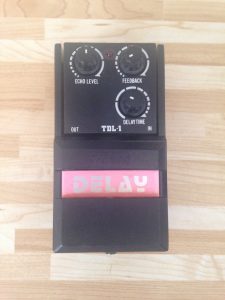
Delay-lay-lay pedals-als-als are-r-r really-ly-ly useful-ul-ul.
Speaking from my own experience, I haven’t found a better delay pedal than the Tokai TDL-1 Delay. There’s three knobs: the delay time, the echo level and the feedback level. The echo level regulates the balance between the delay sound and the direct sound, and the feedback determines the frequency of the delay repeat. If you crank up these last two, putting emphasis on the delay sound and jolting up the frequency, the pedal kind of gets caught on itself, for lack of a better description. You can start quickly turning the delay time knob and what comes out is a “flying saucer” kind of otherworldly sound—the kind of raw effect you’d hear on a Radiohead album.
A delay pedal guarantees childish hours of fun-un-un…
Overdrive:
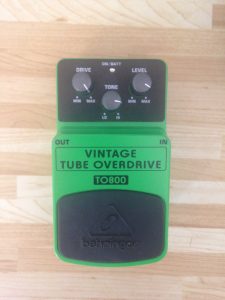
Living without an overdrive pedal should drive you crazy. This pedal mimics the sound of the valves in an amp being cranked to 11, when the tubes are pushed to the brink and deliver that crunchy grunge sound. The drive knob regulates gain, and the tone knob adjusts the treble. You can use the overdrive pedal on an amp that’s already overdriven, giving the sound an extra kick and a fatter, saturated sound.You can also hit the pedal on a clean amp which’ll give the sound a cleaner overdrive more suited to blues or jazz. According to GuitarFella and other publications, the most recommended overdrive pedal is the Ibanez TS8o8 Tube Screamer. It was Stevie Ray Vaughan’s signature pedal. So why not drive to your nearest music store and pick one up?
